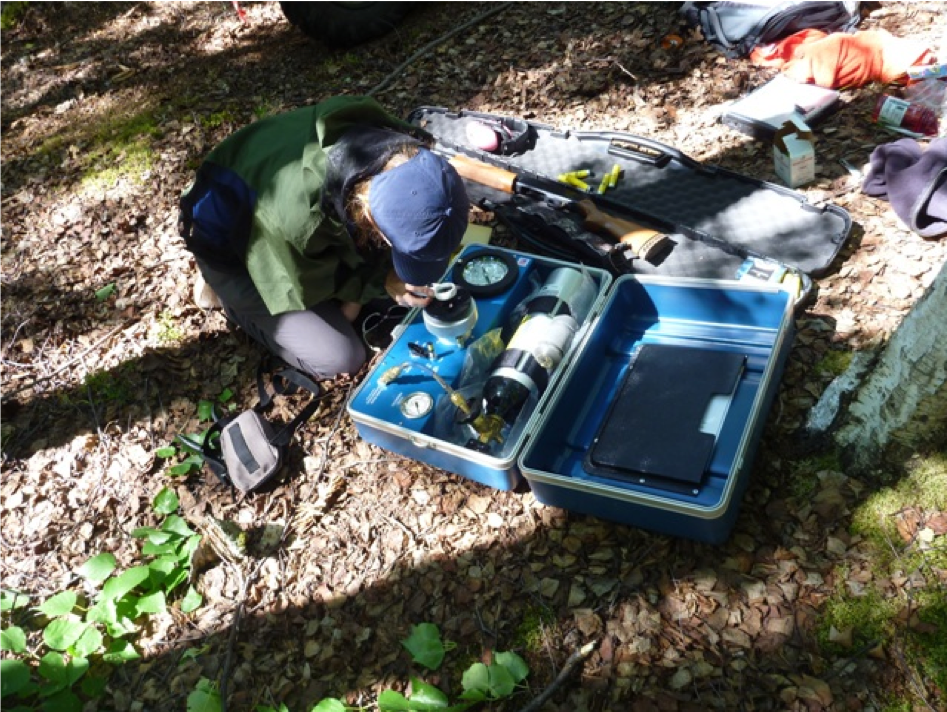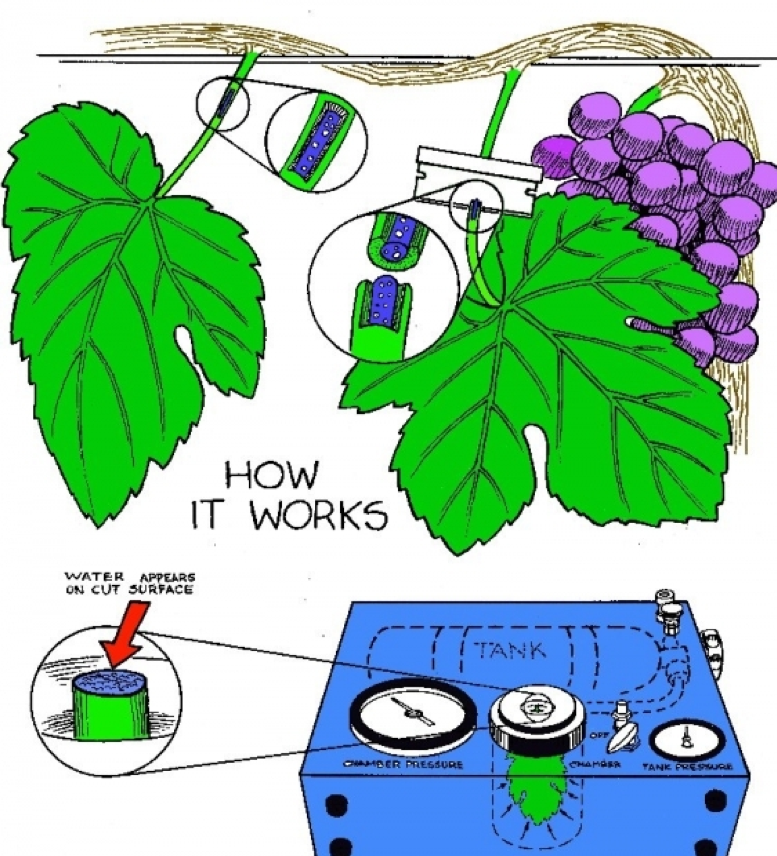Here at Ceres, we have boots on the ground helping to turn imagery into action. One of the tools of choice is known as the pressure chamber, also known as a “pressure bomb”, a great tool to measure the stress of a plant. This, in turn, can help inform decisions on when to irrigate an orchard.
What is a pressure bomb and how does it work?
In simplest terms, the pressure chamber can be thought of as measuring the "blood pressure" of a plant with a couple of key differences. In plants, the vital fluid is water rather than blood, and the water is not pumped by a heart using positive pressure but rather pulled by suction (as water evaporates from the leaves) and capillary action.
Water has free energy i.e. a capacity to do work. In plants, water’s free energy (or chemical potential) is usually referred to as “water potential.” Pure water will have a water potential of 0 bars (“bar” being the unit of measurement). A pressure chamber measures water potential. By applying pressure to a plant’s fresh cut leaf and comparing the results to researched charts, one can determine how much stress a plant is under and determine when to irrigate next.
More detailed information can be found all over the internet. This website is a great resource for everything pressure chamber including some great videos on how to use it in the field. UC Davis Fruit and Nut website also has extensive data for the pressure chamber.


